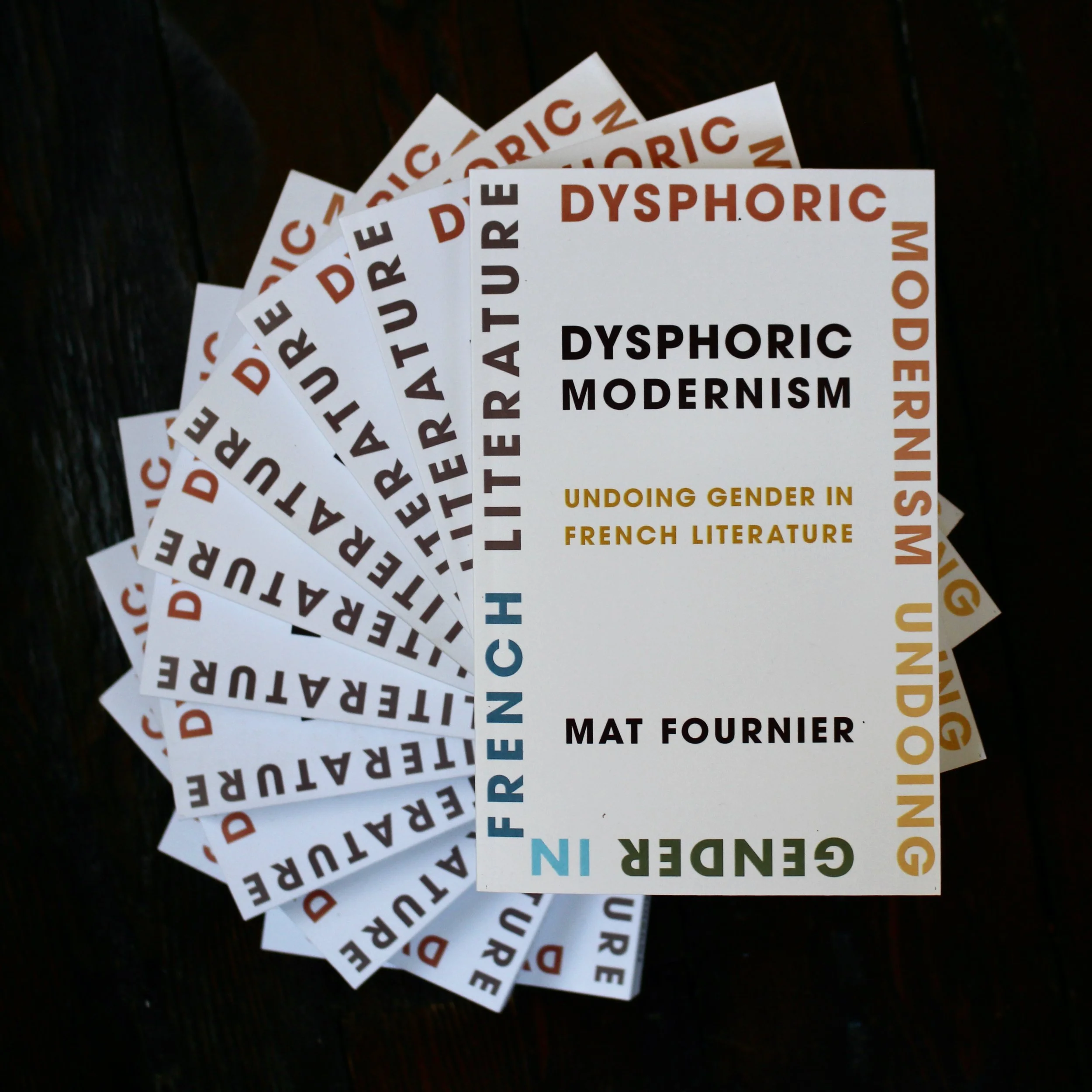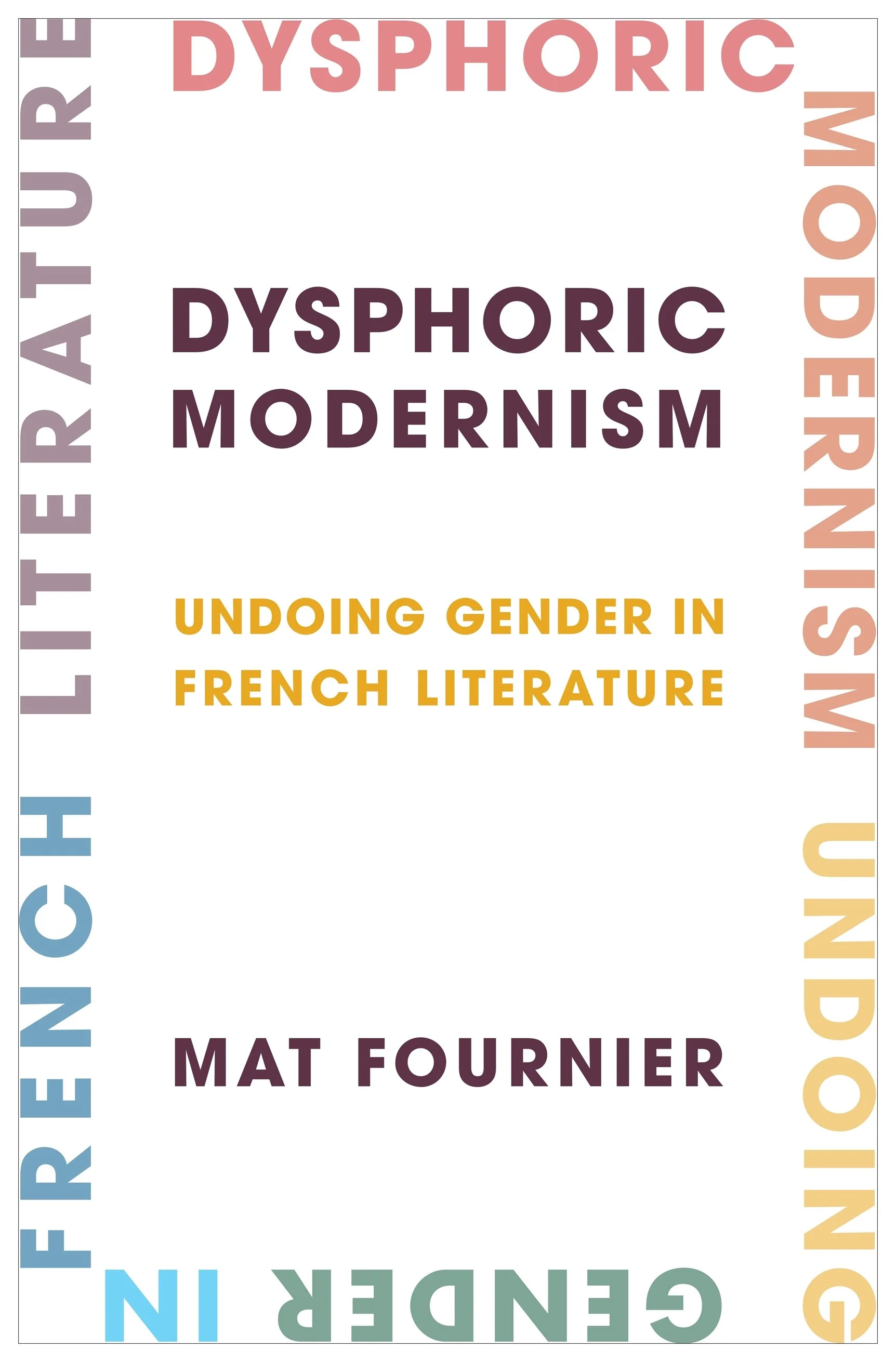dysphoric modernism:
undoing Gender in French Literature
From Columbia University Press, a groundbreaking transgender analysis of French modernist literature, Dysphoric Modernism offers a new understanding of the gender binary. Its trans readings track the dysphoria inherent to modern gender and examine the entanglements of gender and sexuality with the colonial project.
Reviews
Dysphoric Modernism is a brilliant intervention into trans, queer, and modernist studies. By tracing the emergence of the “gender assemblage,” to which everyone relates dysphorically, Mat Fournier presents a Deleuzoguattarian argument for sexuality’s and gender’s interrelatedness, revealing that queer and trans theorists still have much to say to one another. Chris Coffman, author of Queer Traversals: Psychoanalytic Queer and Trans Theories
Proust is at the heart of Dysphoric Modernism, along with a crowd of other well-known and less well-known contemporaries who together produce a collective, shimmering cloud of gender dysphoria, a term Fournier compellingly repurposes so that we can perceive in this modernist moment a “gender assemblage” that is “bursting” or “leaking,” and thereby revealing gender’s implication in all we do and are. Michael Lucey, author of What Proust Heard: Novels and the Ethnography of Talk
The weirdness of modern gender lies at the heart of Mat Fournier’s groundbreaking book, which traces how the gender binary emerged in the early twentieth century. Dysphoric Modernism conjures the magic of queerness and reminds us that its power can’t be extinguished even in the darkest of times. Teagan Bradway, author of Queer Experimental Literature: The Affective Politics of Bad Reading
CHOICE PICKS- JUN 25
“This is an unusual work of scholarship because it is explicitly and intensely personal…. Focusing on the multiple ways gender and power intersect in a capitalist-imperialist system, Fournier argues that today’s notion of gender assemblage has its origins in the first decades of the 20th century.”


